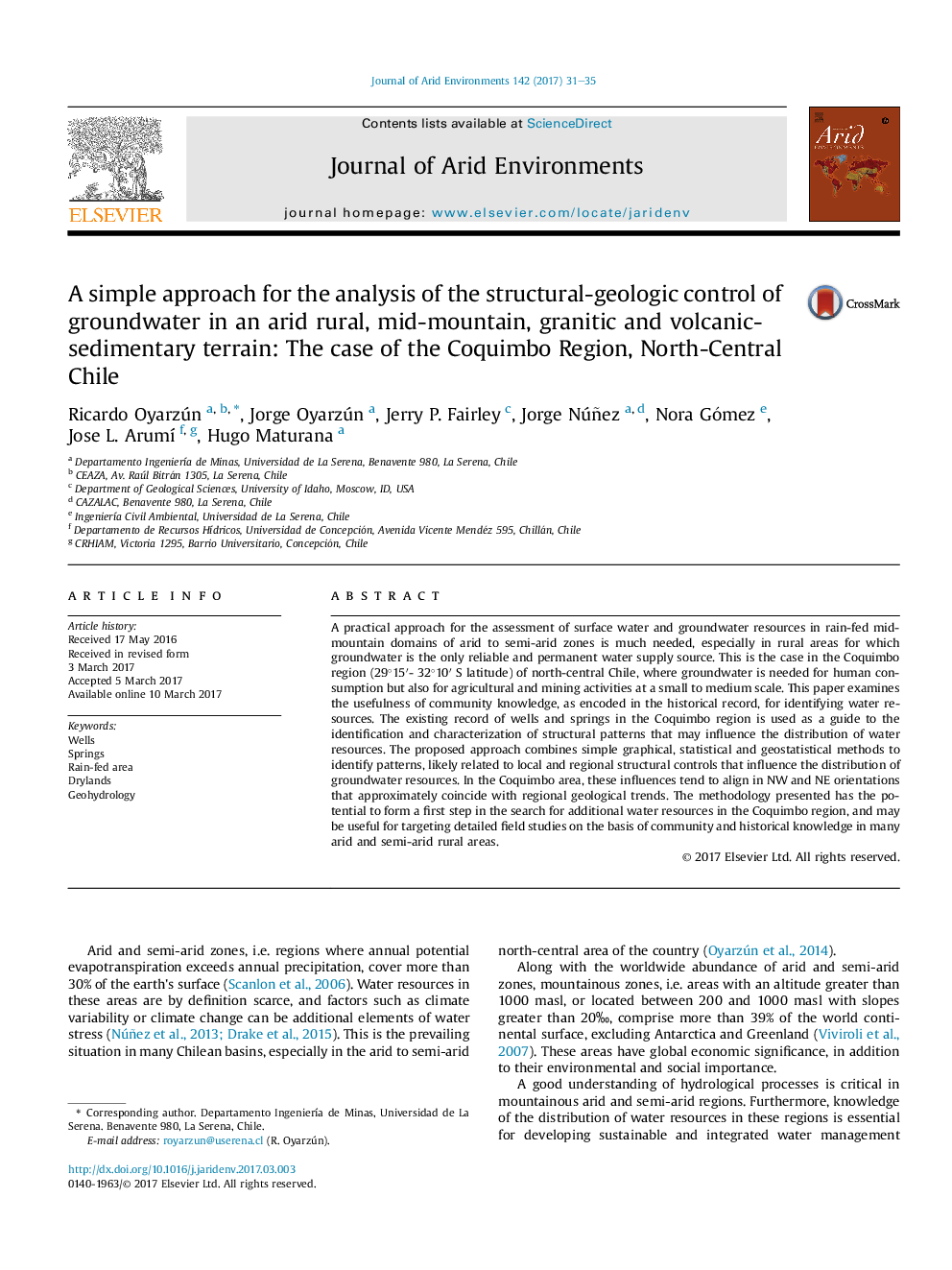| کد مقاله | کد نشریه | سال انتشار | مقاله انگلیسی | نسخه تمام متن |
|---|---|---|---|---|
| 5744297 | 1618217 | 2017 | 5 صفحه PDF | دانلود رایگان |
- Groundwater assessment in rain-fed mid-mountain arid to semi-arid zones is needed.
- The use of known water sources information is evaluated.
- Identify patterns could be related to local and regional structural controls.
- The method could be used as a first step in the study for additional water resources.
A practical approach for the assessment of surface water and groundwater resources in rain-fed mid-mountain domains of arid to semi-arid zones is much needed, especially in rural areas for which groundwater is the only reliable and permanent water supply source. This is the case in the Coquimbo region (29°15â²- 32°10â² S latitude) of north-central Chile, where groundwater is needed for human consumption but also for agricultural and mining activities at a small to medium scale. This paper examines the usefulness of community knowledge, as encoded in the historical record, for identifying water resources. The existing record of wells and springs in the Coquimbo region is used as a guide to the identification and characterization of structural patterns that may influence the distribution of water resources. The proposed approach combines simple graphical, statistical and geostatistical methods to identify patterns, likely related to local and regional structural controls that influence the distribution of groundwater resources. In the Coquimbo area, these influences tend to align in NW and NE orientations that approximately coincide with regional geological trends. The methodology presented has the potential to form a first step in the search for additional water resources in the Coquimbo region, and may be useful for targeting detailed field studies on the basis of community and historical knowledge in many arid and semi-arid rural areas.
Journal: Journal of Arid Environments - Volume 142, July 2017, Pages 31-35
